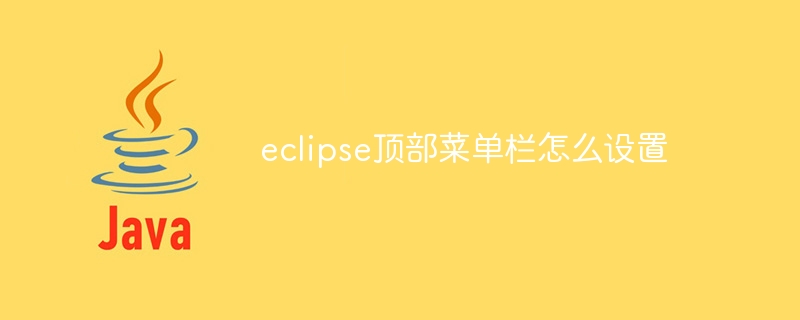Home >Java >javaTutorial >How to set up the top menu bar in eclipse
How to set up the top menu bar in eclipse
- 下次还敢Original
- 2024-05-05 19:06:30830browse
Eclipse users can customize the top menu bar by following these steps: 1. Access the Preferences menu and navigate to Appearance Settings; 2. Add, delete, and reorder menu items; 3. Configure menu items , including associated commands and visibility; 4. Save the changes and refresh Eclipse to see the custom menu bar.

How to set up the Eclipse top menu bar
Eclipse is a popular Java development integrated environment (IDE). Users can customize the top menu bar to optimize their workflow. The following are the steps to set up the Eclipse top menu bar:
1. Open the Window Preferences dialog box
- Click "Window" in the Eclipse top menu bar menu.
- Select "Preferences".
2. Navigate to Menu Settings
- In the Preferences dialog box, expand the General category.
- Select the "Appearance" subcategory.
- Click on the "Menu" tab.
3. Customize the menu bar
Add menu items:
- Click "Add" " button.
- Enter the menu item name in the "Menu Item" field.
- Select the parent menu of the menu item.
Delete menu item:
- Select the menu item to be deleted.
- Click the "Delete" button.
Reorder menu items:
- Drag and drop menu items to rearrange their order.
4. Configure menu items
Associated commands:
- Select the menu item.
- In the "Associated Commands" section, click the "Find" button.
- Select the command to associate to the menu item from the command list.
Set visibility:
- Check the "Visible" checkbox to make the menu item visible in the menu bar.
- Tick the "Context" checkbox to make menu items visible only in specific context menus.
5. Apply changes
- Click the OK button to save the changes.
6. Observe the changes
- Refresh the Eclipse window.
- Your customized menu bar will now be visible.
The above is the detailed content of How to set up the top menu bar in eclipse. For more information, please follow other related articles on the PHP Chinese website!

